Mysterious 128-year-old shipwreck found in search for underwater 'aliens'
A filmmaker husband and wife team searching for an underwater invasive alien species in Canada found something rather more unexpected – a shipwreck lost for 128 years.
Yvonne Drebert and Zach Melnick have been studying North America’s Great Lakes and the dramatic effect quagga mussels have had on the natural wonders.
While the couple were searching for them, scientists working in the same area
tipped them off about an unusual bump spotted on the bottom of Lake Huron
spotted on sonar readings.
The couple set off to investigate, and out of the depths emerged the Africa, a ship lost in 1895.
‘Armed with the location of the anomaly from the fisheries scientists, we packed up our robot, grabbed some friends and their dog, and headed out on what we thought would be a fun Saturday boat ride,’ said Ms Drebert. ‘We honestly expected to find a pile of rocks.’
The couple piloted their remotely operated vehicle (ROV) from a control station aboard their boat, guiding it down 280 feet to the lakebed below.
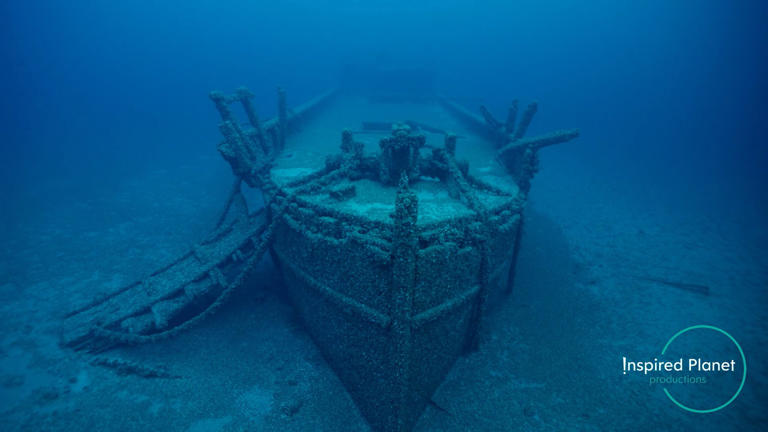
The Africa emerges from the depths (Picture: Inspired Planet)© Provided by Metro
‘We were down for only a few minutes when a huge structure loomed up from the depths – it was a shipwreck,’ said Ms Drebert. ‘We couldn’t believe it.’
Local maritime historian Patrikc Folkes and marine archaeologist Scarlett Janusas were enlisted to help identify the ship, and based on their research – alongside the team’s film and measurements of the vessel – they believe it is the Africa.
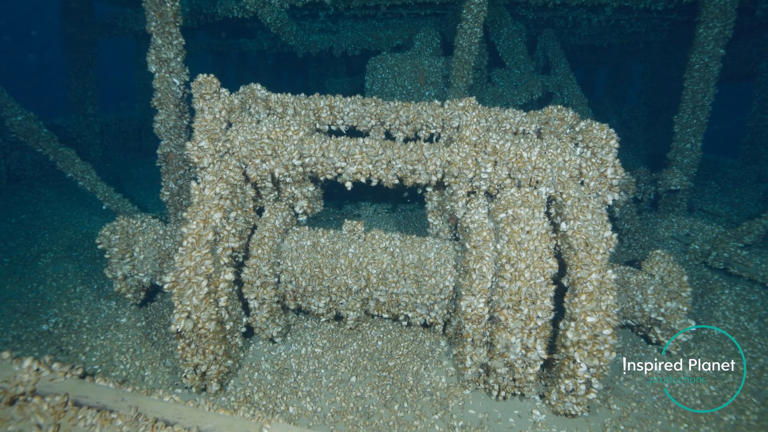
The wreck is completely covered in the mussels (Picture: Inspired Planet)© Provided by Metro
Built in 1873 to carry passengers and freight, the 148ft-long Africa set out for its final journey from Ohio to Ontario on October 4, 1895.
The ship was towing the barge Severn when an early season snowstorm hit Lake Huron. The towline was cut, leaving the Severn to run aground, but the Africa sank, costing the lives of all 11 crew.
And while the search for quagga mussels helped find the ship, they will also ultimately destroy it.
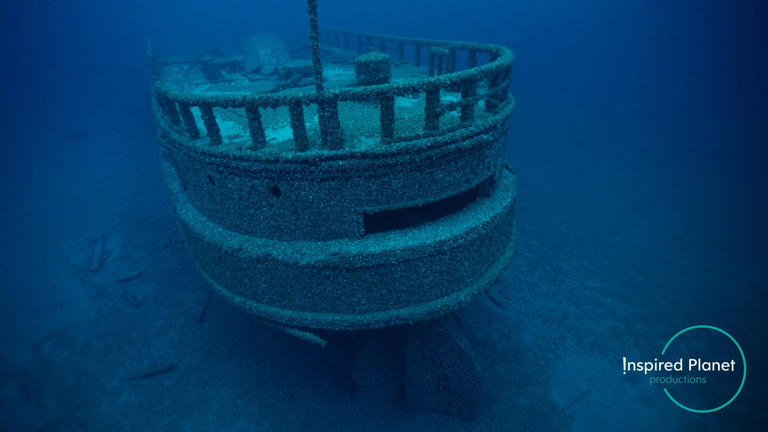
The ship sank during a snowstorm, claiming the lives of all 11 crew
The mussels originate from the Black and Caspian Seas of Eastern Europe. Although typically small, averaging the size of a fingernail, they are prolific breeders and spread rapidly across their habitat.
They are believed to have spread around the world in water discharged from transoceanic ships, having first been spotted in the Great Lakes in 1989.
Related video: #TheMoment 2 filmmakers discovered a 128-year-old shipwreck (cbc.ca) Duration 1:21 View on Watch
The mussels filter vast amounts of water, increasing visibility in the lakes and making the Africa easier to spot.
However, the vessel is now completely entombed in them. Eventually the sheer weight of the mussels will cause it to collapse. They also produce an acid that can corrode even the metal elements of the vessel. the mussels means it is easier to see the ship than before they arrived (Picture: Inspired Planet)© Provided by Metro
‘The quaggas are the reason we’re able to see the shipwreck in almost 300 feet of water without any additional lights.
‘But they’re also responsible for making wreck identification in the Great Lakes incredibly difficult.’
It is not just shipwrecks that the mussels are damaging. The extensive filtering of the water removes essential phytoplankton that support the entire food chain, upsetting delicate ecosystems. The clearer water also allows sunlight to penetrate further than it would naturally, which can also have detrimental effects.
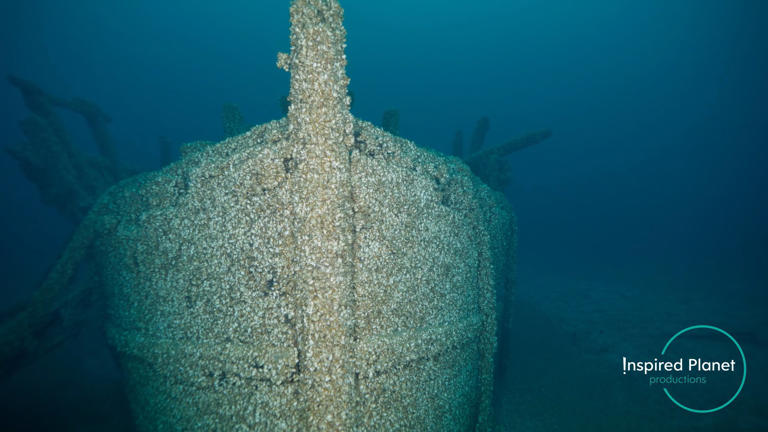
The mussels also produce an acid that can corrode the ship’s metalwork
‘Before discovering the Africa, our work focused on the ecological impacts of the mussels – which have devastated fisheries around the lakes,’ said Mr Melnick.
‘We hadn’t considered the effect they could have on our cultural heritage, but the mussels have truly changed everything in the deep waters of the Great Lakes.’
Invasive alien species – those transported from their natural habitats to new areas, either deliberately or by accident – are one of the greatest contributors to the current ecological crisis.
When released into a new environment, they can cause irreversible damage, threatening the landscape and other species, often leading to extinction.
One of the best – or worst – examples of deliberate translocation of species is the release of cane toads in Australia.
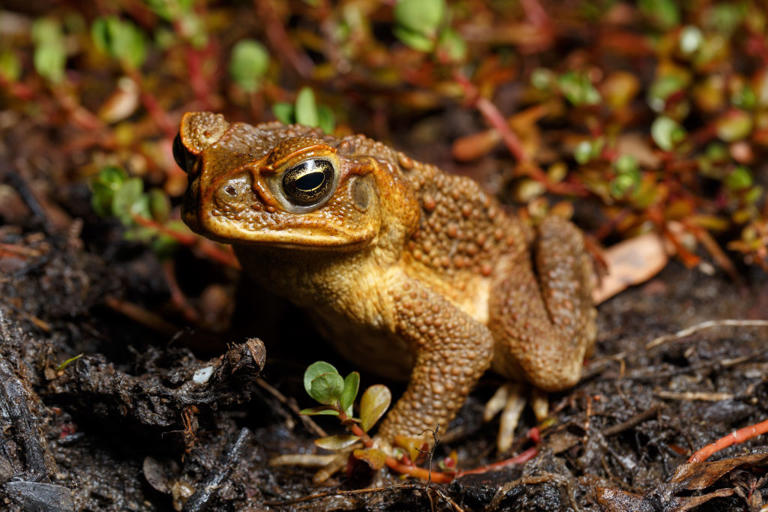
The Australian cane toad population has exploded
In 1935, 2,400 toads were imported from Hawaii to northern Queensland to help solve the problem of cane beetles destroying crops.
Unfortunately, the beetles lived too high up the crop for the toads to reach, while the larvae that do greater damage to crops live in the soil, eating the roots.
Basically, the toads were useless at controlling the pests – but even worse at controlling themselves. From those original 2,400 toads, there are now an estimated 200 million.
That’s about the same number of rabbits also introduced to Australia, which have destroyed the landscape with their voracious grazing.
The country’s ‘most devastating invasion’ began with just 24 of the fluffy creatures.
No comments:
Post a Comment